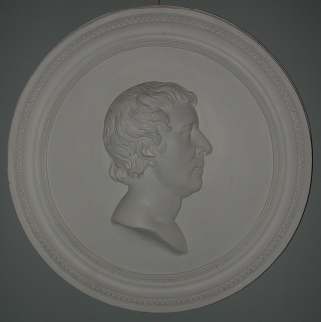As an outstanding exemplar of the tradition of empirical chemistry upon which Lavoisier built we can consider the Swede Carl Wilhelm Scheele, who refused numerous offers of university professorships in order to continue his chemical research undisturbed in conjunction with his practical occupation as an apothecary in Stockholm, Uppsala, and Köping. Though he was only a year older than Lavoisier, his scientific style was quite different. Still, his contributions would prove key for the development of organic chemistry in the next century.
Scheele holds a record for discovering seven natural elements (nitrogen, chlorine, manganese, molybdenum, barium, tungsten, and oxygen, the most important element of all for Lavoisier's chemical revolution), but he had to share credit in every case because his results were not published quickly enough to obtain undisputed priority. (click to read about Scheele's disclosing oxygen to Lavoisier)

There is no contemporary likeness of Scheele.
This plaster medallion in the Royal Swedish Academy
of Sciences was created 40 years after his death.
As you can infer from the illustration of his laboratory on the title page of his 1777 book on oxygen, which he called Feuerluft or Fire-Air, his means of analysis were limited. It would be decades after his death until melting points were introduced to measure identity and purity.
He used the means available, including taste, and it is thought that poisoning by heavy metals (he also discovered hydrogen cyanide) may have contributed to his health problems (though his death at the age of 44 probably had to do with heart weakness from rheumatic fever).
Regardless of whether taking unwitting risks constitutes heroism, Scheele is certainly an authentic chemical hero.
One of his creations was the green pigment copper arsenite, which as "Scheele's green" became a popular coloring for confections, until it was discovered half a century later to be poisonous. Presence of this pigment in the bedroom wallpaper of Napoleon in exile on St. Helena may have been a factor in his demise.
